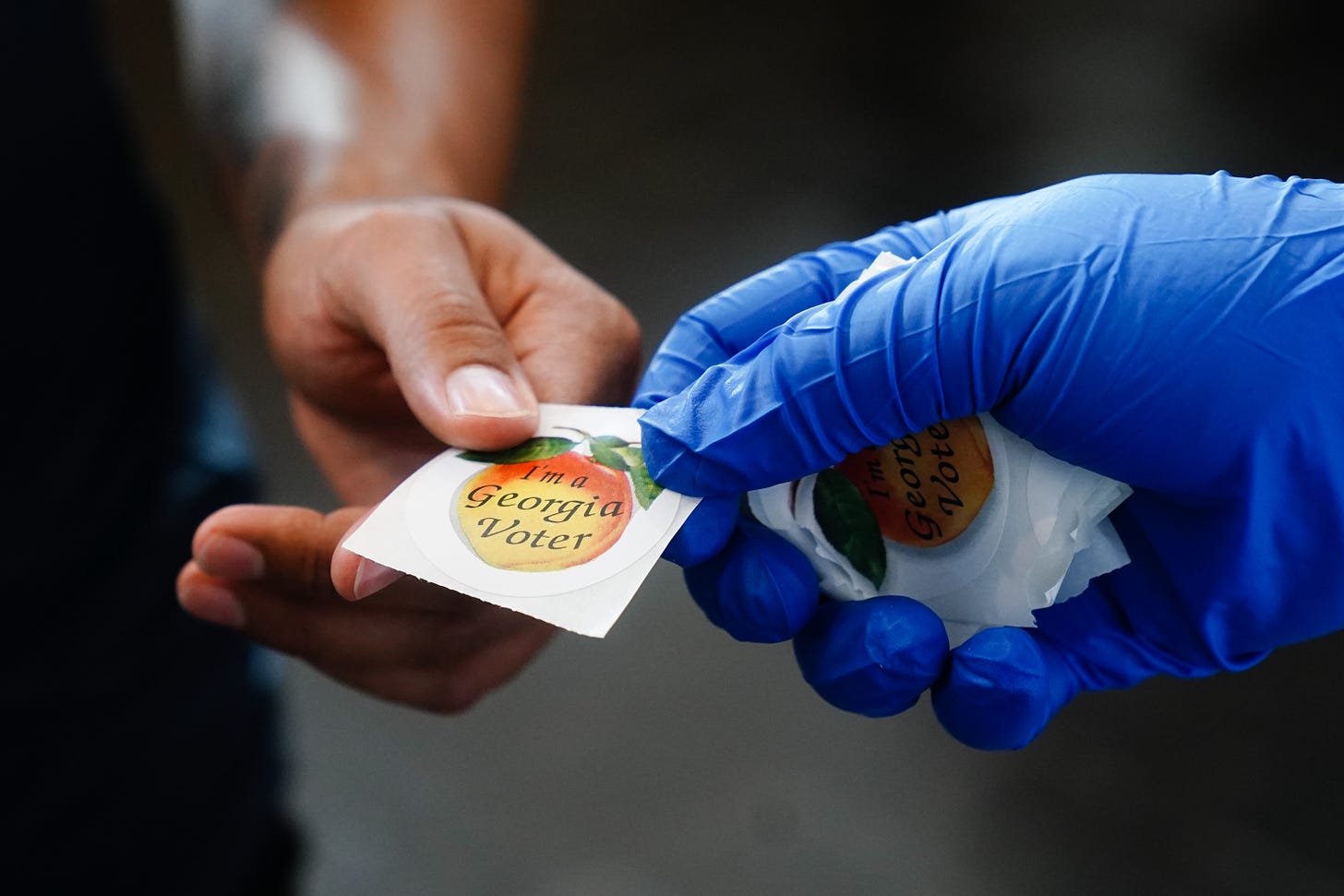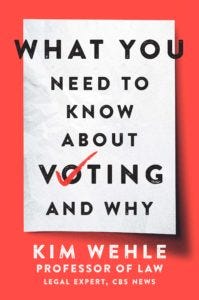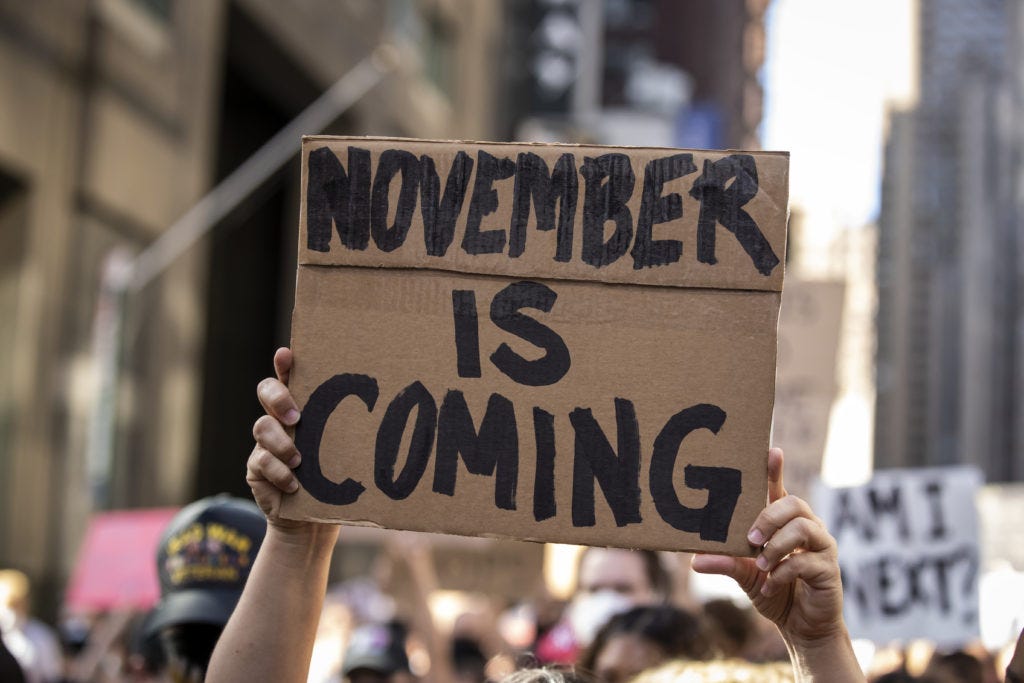

There are approximately 250,000,000 voting-aged people in the United States today. Of the people who were eligible to vote in the last presidential election—that is, citizens who were then over the age of 18—Hillary Clinton got 29 percent of their votes; 28 percent went to Donald Trump. The biggest winner? The 39 percent of eligible voters who voted for nobody. They didn’t cast a vote for president at all. This widespread apathy—not voter suppression schemes, broken machines, or long lines at the polls—is the single biggest factor plaguing the American electoral system today.
In February, the Knight Foundation—a First Amendment-focused nonprofit foundation—issued a report on its comprehensive study of people who choose not to vote, based on a survey of 12,000 “chronic non-voters” across 10 swing states. Non-voters span the categories of gender, race, political ideology, income, and education (although they are “significantly less likely to have graduated from college than their active voter counterparts”). Some 38 percent of the respondents said they stayed home from the polls because they believe that their votes don’t matter or that “the system is rigged.” And they are skeptical that politicians in Washington make decisions that actually impact their lives.
Non-voters are also unimpressed and uninspired by the candidates for office. One female non-voter from Las Vegas stated, “I hate the thought of voting for the lesser of two evils. That just turns my stomach.” Another from Milwaukee said, “The times that I’ve spent to get a little bit more educated, all the options suck. I don’t feel like one is great so I’m not going to vote at all.”
Crucially, though, they feel markedly underinformed. Non-voters are twice as likely as regular voters to get their news in passing rather than by seeking it out. They feel less informed about the candidates and are relatively uninterested in politics. “Voting is very hard to prioritize,” reported another male non-voter from Philadelphia. “If I need to feed my kids or if I need to vote, I’m feeding my kids.”
What does all of this mean for the November election?
First, it’s important to underscore that getting people to the polls should not be a politically polarizing issue. According to the report, “if they all voted in 2020, non-voters would add an almost equal share of votes to Democratic and Republican candidates” (despite some differences in swing states, such as an even lower interest in politics). To date, politicians affiliated with the Republican party—including the current occupant of the Oval Office—tout voter fraud as a reason not to expand access to voting. But even among regular voters, evidence suggests that mail-in options do not benefit one party over the other.
Nonetheless, the Knight Foundation survey revealed that only 18 percent of respondents were “very confident” that the results of an election represented the will of the people. So they stay home on Election Day. But this is a non-solution solution. Staying home is not merely a non-vote: It has the effect of enhancing the value of the votes that are ultimately cast. Around 137 million Americans—or 60 percent of those eligible—voted in the last presidential election, meaning their political choices dictated the outcome for the remaining 40 percent who declined to participate. Recall that George W. Bush won the 2000 presidential election over Al Gore by a paltry 537 votes in a single state: Florida. The belief that votes don’t matter is not borne out by statistics—or by the very fact of the relentless attempts by foreign powers such as Russian dictator Vladimir Putin to skew American elections by scamming voters to cast ballots based on false information planted on the Internet.
Second, it’s absolutely vital to support and promote basic civic education in America, especially around voting. People care a lot about national and international issues like immigration, race relations, climate change, the economy, poverty, and LGBTQ rights. They also care about “kitchen table” issues like access to health care, job security, food security, and housing. All of these issues are affected by elected politicians one way or another. Voting is the fulcrum of anything else we care about when it comes to government solutions in a democratic republic.

Yet in a survey conducted in 2019, the Annenberg Public Policy Center found that 3 in 5 Americans could not correctly name all three branches of government: executive, legislative, and judicial. That result, which has been relatively consistent in surveys across more than a decade, suggests that more than half of the population does not understand basic civics. It’s folly to expect them to understand how important voting is for themselves and their families.
Third, people need to understand that the stakes are extremely high—it’s a use-it-or-lose-it moment for American democracy. Some respondents in the Knight Foundation survey (it’s unclear how many) reported feeling “depressed, discouraged or distracted when consuming news content”; they distance themselves from it. This is tragic, as stoking fear and anxiety as a means of nefariously consolidating power is not new to history. As Masha Gessen recently explained in The New Yorker, “a population gripped by terror creates extraordinary opportunities for this President, who has been groping his way to autocratic rule.” The choice in the fall is not between Trump and the presumptive Democratic nominee, Joe Biden, but between democracy and another form of government—a degraded, lesser democracy that is approaching authoritarianism.
Still, social-science studies show that scaring people is not the best way to prompt action. Messages are better framed in ways that connect with individual values and worldviews. Conveying important concepts with imagery rather than words, with positive versus negative emotional hooks, with meaningful—versus superfluous—calls to action, and through powerful storytelling are also more likely to make people care about an issue and change their behavior accordingly. Voting should be as natural as brushing teeth in the morning—because it’s good for you.
Fourth, and importantly, non-voters “also struggle the most with the voting process.” They find voting annoying. In the United States, voting is not a single system, or even 50 separate state-sponsored systems, but hundreds of mini-systems that vary precinct by precinct. Keeping anything on track with so many varying standards and individual players is virtually impossible. Particularly in the wake of COVID-19, states are strapped for cash with myriad pressing priorities. Congress hasn’t invested serious dollars in voting equipment since 2002, leaving states with broken and outdated machinery that lead to long lines and even chaos, as last week’s Georgia primary revealed.
There are menacing forces behind efforts to suppress the vote. But the practical challenges are real, too. Training seasonal poll workers—most of whom tend to be older and potentially more susceptible to the coronavirus—and then educating the voting public about system changes are daunting tasks. Ballots must be printed for multiple elections and in multiple languages, which requires money, training, cooperation by third-party vendors—and time. Mail-in voting is rightly touted as a remedy to disenfranchisement during a pandemic, but as the nation has seen in multiple recent primaries, the U.S. Postal Service is not as reliable as it should be: Some ballots didn’t get to voters—or to precincts—in time to be counted, and President Trump has vowed to veto any legislation that would bail out the bankrupt USPS in time for the November election.

A Caucasian protester wearing a mask holds a homemade sign that reads, "November Is Coming" in reference to voting in people that can change polices and put in legislation to remove racism as they walk the streets of New York City. Photographed in the Manhattan Borough of New York on June 14, 2020, USA. (Photo by Ira L. Black/Corbis via Getty Images)
Fifth and finally, Americans need to hear a discrete—and concrete—call to action between now and November that does not rely on state politicians and congressional bailouts. Data going back more than a decade shows that social pressure gets Americans to vote. Before a special election in 2008, a flier was sent to 100,000 Michigan residents proposing to reveal neighbors’ voting histories with the question, “What if your neighbors knew whether you voted?,” resulting in “substantially higher turnout.” Political organizers nonetheless mostly rebuff the shaming strategy, because it makes people feel bad.
But since Trump’s win in 2016, voting advocates have been giving the idea another look, with turnout apps like VoteWithMe gaining traction—particularly when it comes to younger voters. Only about half of the eligible under-35s voted in 2016. Increasing this demographic’s participation this year could clinch the election for Biden.
So here’s an easy ask that can make all the difference in November: Grab a friend, coworker, neighbor, or family member or two who doesn’t participate in elections, and get them to vote—even if just this once. The future of America depends on it.










